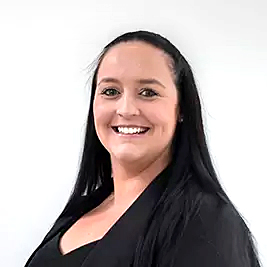Choosing a home loan? Here are 8 considerations to keep in mind
Selecting a lender for your home loan is a significant decision.
Finding the right home loan could save you thousands of dollars in the long run and allow you to benefit from additional features, such as a redraw facility or offset account. On the other hand, selecting a less than ideal lender can be incredibly costly over the course of your loan — not to mention stressful.
With so many different elements to juggle, it’s easy to get lost or to overlook a small consideration that may have a big ramification on your future home loan. To help you make the right decision for your personal and financial situation, we’ve rounded up 8 of the most important considerations to keep in mind when choosing your home loan.
1. How much do you have as a deposit?
Some lenders require you to have a minimum loan-to-value ratio (LVR) in order to take advantage of certain home loan products. This may be because they offer additional features as part of the loan, or have a lower interest rate than other lenders in the market.
As a general rule of thumb, it’s best to save at least a 20% deposit for your home loan — although some home loan products may even require 30% or 40%. If you have less than 20%, you may need to pay for Lender’s Mortgage Insurance and may not be eligible for certain interest rates.
2. What type of home loan do you want?

There are three main types of home loans available, each with different benefits and features:
- Basic home loans. As the name suggests, these loans are as clear-cut as they come. Basic home loans are no-frills and come with very few features, but this also means buyers benefit from a lower interest rate. Bear in mind that these types of loans may have strict restrictions and fees on any redraw facilities, which may affect any extra repayments you can make over the course of your loan.
- Standard home loans. These offer more flexibility than their basic counterparts and come with a redraw facility, as well as a 100% offset account. You also have the option to choose between a fixed-rate loan and a split loan consisting of a fixed and variable portion.
- Home loan packages. Home loan packages come with all the bells and whistles that a standard home loan offers, and then some. You’ll typically see home loan packages advertised at a lower interest rate, along with additional benefits like a free transaction account and a no annual fee credit card. However, you do end up paying extra fees for these benefits — sometimes as much as $400 per year.
3. Fixed-rate, variable, or somewhere in between?
This is one of the biggest questions you’ll ask when choosing a home loan. Although it may seem like a small decision now, picking a fixed-rate home loan over a variable rate home loan (or vice versa) can affect your repayments for years to come.
A fixed interest rate allows you to have more predictability on repayments, but offer less flexibility. You’ll be locked into an interest rate for a set period of time, which means you won’t get any benefit if interest rates go down. Most fixed-rate loans also don’t allow you to make extra repayments.
Some brokers do have access to fixed-rate home loans with offset accounts, which may not be available to the market. If you’re looking for a home loan with a fixed interest rate and a 100% offset account, talk to the team at Rateseeker today.
On the other hand, a variable interest rate goes up and down with the lending market. You have less stability on the amount you’ll be paying off, but you get the added bonus of having greater flexibility to make extra repayments or switch providers more easily.
There are also options to go for a split loan, which means that part of your loan will be fixed and part of it will be variable. With most lenders, you can choose the percentage you’d like to allocate towards each (for example 60% fixed and 40% variable).
4. What additional features do you want?

As we touched on earlier, some home loans come with extra features, such as a redraw facility, free transaction account or a no-fee credit card.
Bear in mind that most of these features aren’t “free” even if they advertise it that way. Instead, the costs are bundled into the overall cost of your loan, typically in terms of an annual fee or a higher interest rate.
Focus on the ‘must have’ features for your home loan. Here are some of the ones worth factoring into your decision-making process:
- Redraw facility. A redraw facility gives you access to any additional repayments you have made over the course of your loan. This can be particularly helpful if you have an unexpected emergency, or need additional funds for a holiday or a new purchase.
For example, if you’ve paid an additional $100 off your mortgage for 12 months, you’ll have $1,200 available in your redraw facility to withdraw at a later date. - Offset account. An offset account is a transaction account that’s linked to your home loan. You can keep your savings in your offset account, then this amount is offset against the amount owing on your loan. However, you typically won’t earn interest on an offset account, as you’ll be paying less interest on your loan.
Let’s say you have $50,000 in your offset account, and have $300,000 owing on your mortgage. In this case, you would only need to pay interest on $250,000, which can add up to thousands over the lifetime of your home loan.
- Extra repayments. This feature can be a handy way to shave years off your mortgage, as well as thousands of dollars. Some lenders may actually charge you a break fee if you make additional repayments, so be sure to clarify with your lender if you want to take advantage of this feature.
- Additional line of credit. It’s common for lenders to offer an additional line of credit, such as a credit card, as part of their home loan package. If you’re in the market for a new credit card or want to make the switch, this could be a useful way to save money on fees or secure a better deal.
- Repayment holiday. If the COVID-19 pandemic taught us anything, it’s the value of a repayment holiday. Repayment holidays allow you to stop or reduce your repayments for a fixed duration of time, which can be anywhere between three and 12 months (depending on your lender).
5. Are there establishment and ongoing fees you need to be aware of?
Your lender may charge you an application fee, as well as a monthly or annual service/administration fee. These can come as a surprise if you’re not expecting them, so be sure to clarify the costs with your lender or mortgage broker before signing on the dotted line.
6. What type of property are you buying?

Not all properties are created equal in the eyes of lenders. The type of property you purchase may affect the amount you can borrow, or which lender you choose for your loan.
One of the most common is an inner-city apartment (also known as high-density housing). If your unit is defined as an inner-city apartment (i.e. a unit in Sydney CBD), your lender may restrict the amount you can borrow. This is because house prices in these areas tend to fluctuate more, so the lender views them as higher risk than a property in the suburbs.
Other property types that may affect your home loan choices include units under 50sqm or hobby farms.
7. What are the break costs?
You may be planning to repay your mortgage over the course of 30 years, but that doesn’t mean you have to stick with the same lender for the entire time. Your situation will likely change over your loan term, so it’s worth reviewing your loan every few years and seeing if there’s an opportunity to refinance your mortgage.
Switching lenders comes with plenty of benefits, from lower interest rates to additional home loan features. But there’s a catch: your existing lender may charge you to do it, either in the form of discharge fees or break-cost fees (only if your loan is currently fixed).
It’s a good idea to check the break costs for each home loan option upfront, especially if you plan to refinance your mortgage in the short term.
8. Have you considered using a broker?

Picking the right lender and home loan product can have a significant impact on your financial situation for the duration of your mortgage. You could save thousands, or even tens of thousands, by choosing one home loan product over another. Because of this, it’s a good idea to seek help from the experts.
A mortgage broker can help you navigate the complexities of the market to find the ideal product for your unique situation. Plus, working with a broker like Rateseeker is completely free.
Ready to find the right home loan for you? Contact us today for an obligation-free consultation.
** General Advice Warning
The information provided on this website is general in nature only and it does not take into account your personal needs or circumstances into consideration. Before acting on any advice, you should consider whether the information is appropriate to your needs and where appropriate, seek professional advice in relation to legal, financial, taxation, mortgage or other advice.




